Best Website Redesign Plan: Transform Your Digital Experience
Why Your Business Needs a Website Redesign Plan Now

In the fast-paced AE region, your website is often the first point of contact with potential customers. A dated website can negatively impact how people perceive your brand and, ultimately, your profits. An outdated or poorly designed site can lead to missed sales opportunities and a weakened brand image, especially in a tech-savvy market like the UAE.
For instance, slow loading speeds, confusing site navigation, and a design that doesn’t adapt to different devices can frustrate users and send them straight to your competitors.
User expectations are also constantly changing. What impressed users a few years ago might now feel clunky and out of date. This makes a website redesign plan essential for your business strategy. This plan should be comprehensive, covering both visual updates and improvements to how your website functions to maintain a fresh and effective online presence.
Recognizing the Warning Signs
Several warning signs indicate it’s time for a website redesign. A poor mobile experience is a major one. In a region with high mobile usage, a site that isn’t optimized for smartphones and tablets can discourage potential customers. Accumulating technical debt, such as outdated code or plugins, can slow your site down, make it vulnerable to security risks, and difficult to update.
Beyond technical issues, perhaps the most important reason for a redesign is the evolving nature of user expectations. Consumers in the AE region expect sleek, modern, and user-friendly digital experiences. Failing to meet these expectations can damage your brand’s credibility and cost you valuable business.
The impact of design on consumer behavior highlights the importance of website redesign. In the rapidly growing Middle Eastern e-commerce market, a well-designed website can significantly increase conversion rates—by up to 200%. With the Middle East’s e-commerce sector expected to reach $50 billion by 2025, businesses must ensure their websites are attractive and functional. Poorly designed websites can lead to high abandonment rates, with 38.5% of users leaving due to outdated designs. A strategic redesign plan should prioritize engaging user experiences aligned with the region’s digital trends. Find more detailed statistics here: My Codeless Website
The Benefits of a Proactive Approach
Forward-thinking businesses in the AE region are proactively redesigning their websites to stay ahead of the competition. By addressing the issues mentioned above, they improve user experience and boost their search engine rankings. This proactive approach also increases conversion rates and strengthens their brand presence. It demonstrates a commitment to digital excellence, vital for sustained success in today’s competitive market. A well-executed website redesign ultimately leads to tangible business results and positions your company for long-term growth in the dynamic AE digital landscape.
Building Your Website Redesign Framework For Success

A successful website redesign in the AE region requires more than just a visual refresh. It demands a robust website redesign plan, a structured framework built on a strong strategic foundation. This framework ensures your redesign transforms your online presence into a valuable asset. Consider professional web design services when planning your redesign. This isn’t just about a new look; it’s about achieving tangible business results.
Defining Measurable Objectives
Before diving into design, define what success looks like. Establish measurable objectives aligned with your business goals. For instance, if increasing brand awareness is your goal, prioritize improving visibility and engagement metrics.
If you’re aiming to boost sales, prioritize conversions. Focus on streamlined user journeys and clear calls to action. These objectives will guide your redesign, ensuring every decision contributes to meaningful outcomes.
Understanding Your Audience Through Research
Knowing your audience is paramount. Conduct thorough audience research to understand their online behavior, preferences, and pain points. This research shapes design choices, ensuring your website resonates with your target market.
Understanding language preferences, cultural nuances, and device usage is crucial in the AE region. A localized approach maximizes engagement and conversions in this diverse market.
Analyzing The Competitive Landscape
A competitive analysis is essential. Evaluate competitors’ websites to understand their strengths, weaknesses, and strategies. Identify best practices to adopt and areas to differentiate your brand. Understanding how competitors cater to the AE market informs your regional strategy.
Content Audit, Budget, and Team Assembly
A content audit determines which content needs updating, repurposing, or removal. This ensures your website offers fresh, relevant information. A realistic budget prevents cost overruns.
Assembling a skilled cross-functional team is also critical. This team should include members from marketing, design, development, and other relevant departments. A collaborative approach ensures alignment between your website and your business objectives.
To help guide your redesign planning, use the checklist below. It outlines the key components and their importance in the redesign process.
A website redesign involves many moving parts. The following table provides a comprehensive checklist to help you stay organized and on track.
Website Redesign Plan Components Checklist
A comprehensive checklist of essential elements required for a successful website redesign project
| Component | Purpose | Key Deliverables | Timeline Phase |
|---|---|---|---|
| Audience Research | Understand user needs and preferences | User personas, customer journey maps | Discovery |
| Competitive Analysis | Identify opportunities and best practices | Competitor analysis report | Discovery |
| Content Audit | Evaluate existing content and identify gaps | Content inventory, content gap analysis | Strategy |
| Website Design | Create a visually appealing and user-friendly design | Wireframes, mockups, prototypes | Design |
| Website Development | Build a functional and responsive website | Codebase, testing documentation | Development |
| SEO Optimization | Ensure website visibility in search engines | Keyword research, on-page optimization | Development/Launch |
| Content Migration | Transfer existing content to the new website | Content migration plan, updated content | Launch |
| Testing and Quality Assurance | Ensure website functionality and usability | Test cases, bug reports | Launch |
This checklist ensures a structured approach to your redesign. By addressing each component, you set the stage for a successful launch and maximize your chances of achieving your objectives.
Crafting User Experiences for Middle Eastern Audiences

Designing a website for Middle Eastern audiences requires a thorough understanding of the region’s distinct online behaviors and preferences. This goes beyond simply translating content; it involves adapting the entire user experience to resonate with local culture and expectations. A successful website redesign plan considers these factors to connect with the target audience.
Multilingual Implementation: More Than Just Translation
Offering multiple language options is vital in a diverse region like the Middle East. However, true multilingualism goes beyond simple translation. It means adapting the user interface, navigation, and design to suit the cultural context of each language.
Right-to-left languages like Arabic, for instance, require specific adjustments to the website’s structure and visual flow. This thoughtful adaptation not only enhances the user experience but also demonstrates respect for cultural diversity.
Region-Specific Design Patterns for Enhanced Engagement
Middle Eastern users have unique digital habits. Integrating region-specific design patterns can drastically improve website engagement.
Given the exceptionally high mobile usage in the region, prioritizing mobile responsiveness is critical. Incorporating popular social media platforms like Instagram and WhatsApp can also significantly enhance user engagement. These platforms play a key role in online interactions across the Middle East.
Planning a website redesign for the Middle East necessitates understanding the region’s digital landscape. Internet penetration in the United Arab Emirates, for example, is close to 100%, with a significant portion of the population using digital channels for shopping and services. With 73.1% of users abandoning websites due to non-responsive design, prioritizing mobile-first design is paramount. The young, tech-savvy demographic further emphasizes the importance of innovative features and broad device compatibility. To delve deeper into this topic, explore this insightful article: Digital Consumers in the Middle East.
Building Trust Through Cultural Nuances
Cultural sensitivity plays a crucial role in establishing trust with Middle Eastern audiences. A successful website redesign acknowledges and respects religious holidays, cultural sensitivities, and local customs.
Adapting website aesthetics and messaging during Ramadan, for example, demonstrates cultural awareness. These thoughtful considerations can significantly strengthen your brand’s connection with the local community.
Navigation, Content, and Visual Aesthetics
Intuitive navigation, clear content presentation, and visually appealing aesthetics are also essential. Navigation should be user-friendly, regardless of prior experience with your brand. Content should be concise and easy to understand, accompanied by visuals that align with local preferences.
Visuals are powerful tools for conveying your brand message. Consider using culturally relevant imagery and color palettes to resonate with the target audience. These combined elements create a seamless and engaging user experience tailored to the Middle Eastern market. A well-executed website redesign strengthens your brand presence and fosters stronger connections with your target audience in the AE region.
Executing Your Website Redesign With Precision

The execution phase is where your website redesign plan transforms from concept to reality. This stage involves carefully coordinating design and development efforts to bring your vision to life online. This section offers a practical guide to navigate the crucial implementation phases of a successful website redesign, particularly within the AE region.
Information Architecture and Wireframing
A well-defined information architecture is essential for a user-friendly website. It serves as the blueprint, organizing content logically for easy navigation. This allows users to find information quickly and efficiently, enhancing their overall experience.
Wireframing builds upon this structure with visual representations of your website’s layout. These wireframes, often simple black and white outlines, prioritize functionality and user flow. This allows for early feedback and adjustments before the design phase.
Visual Design and Branding
With finalized wireframes, the visual design process takes center stage. This is where your brand’s personality truly shines. The visual design should align with your brand guidelines, using colors, fonts, and imagery that resonate with your brand identity.
Balancing aesthetics with usability is key. The design must be visually appealing yet functional, ensuring a seamless and enjoyable user experience. Prioritizing both form and function will contribute to a successful redesign.
Local Trends and Technologies
When redesigning a website in the Middle East, it’s essential to consider local trends and technologies. The graphic design market in the region is expected to grow at a 3.1% CAGR from 2025 to 2033, emphasizing the importance of visual identity. Middle East and Africa Graphic Design Market Report provides further insights into this growing market. With 91% of MENA consumers purchasing products online, a successful redesign must prioritize visual appeal and seamless online interactions. Furthermore, integrating sustainability into the design can attract environmentally conscious consumers, a growing segment in the region.
Content Migration and CMS Selection
Content migration, the process of transferring existing content to your new website, is a crucial step. Careful planning and execution are necessary to maintain data integrity and prevent content loss. Choosing the right Content Management System (CMS) is equally important.
The ideal CMS should be user-friendly, scalable, and capable of supporting your long-term content strategy. A CMS with robust SEO capabilities is particularly important in the competitive AE digital market, such as WordPress.
Development Workflow and Collaboration
A structured development workflow minimizes errors and ensures efficient project delivery. This workflow should incorporate regular testing and quality assurance checks. Collaboration is vital during this phase, with effective communication between designers, developers, and stakeholders.
Managing stakeholder input without impacting timelines requires clear communication channels and a well-defined feedback process. This helps keep the project on track and addresses potential issues promptly.
Maintaining Momentum and Managing Complexities
Website redesigns can be complex projects with numerous interconnected elements. Maintaining momentum throughout the implementation phase is critical for success. This often involves breaking down the project into smaller, manageable tasks with realistic deadlines. Celebrating milestones along the way can help maintain team morale and motivation.
Practical techniques for managing complexity include using project management tools like Asana or Trello, prioritizing tasks based on business impact, and ensuring open communication within the team.
The following table provides a comparison of different website redesign approaches and their respective timelines.
Website Redesign Timeline Comparison
A comparison of different website redesign approaches and their typical timeline requirements
| Redesign Approach | Planning Phase | Design Phase | Development Phase | Testing Phase | Total Timeline | Best For |
|---|---|---|---|---|---|---|
| Phased Approach | 4-6 weeks | 6-8 weeks | 8-12 weeks | 2-4 weeks | 4-6 months | Complex websites, large organizations |
| Agile Approach | 2-4 weeks | 4-6 weeks | 6-8 weeks | 1-2 weeks | 3-4 months | Projects requiring flexibility and quick iterations |
| Waterfall Approach | 4-6 weeks | 6-8 weeks | 8-12 weeks | 2-4 weeks | 4-6 months | Projects with clearly defined requirements and minimal changes |
Choosing the correct approach depends on the specific needs and complexity of your project. Each approach offers distinct advantages and disadvantages.
A well-executed website redesign enhances your online presence and positions your business for continued growth within the dynamic digital environment of the AE region.
Pre-Launch Testing That Prevents Costly Mistakes
A meticulously planned website redesign can still fail without thorough testing. This crucial step separates successful launches from embarrassing and costly ones. Pre-launch testing is integral to any effective website redesign plan. This section reveals essential quality assurance strategies used by successful digital teams worldwide.
User Acceptance Testing (UAT)
User Acceptance Testing (UAT) involves real users interacting with your redesigned website to identify usability issues. This provides valuable feedback on navigation, content clarity, and the overall user experience. Structured UAT methodologies ensure this feedback is systematically collected and analyzed. This testing helps identify areas that might not be apparent during internal reviews, ensuring a seamless and positive experience for your target audience.
Technical Validation Across Devices and Browsers
Technical validation is paramount. Your redesigned website must function flawlessly across various devices and browsers. Testing on different screen sizes, operating systems, and browsers (like Chrome, Firefox, and Safari) identifies compatibility issues that could alienate a segment of your audience. Executing the redesign efficiently is crucial for minimizing downtime. Read about creating an efficient website design process.
Performance Optimization for a Smooth Launch
Performance directly impacts user experience and search engine rankings. Optimizing your website’s speed, including image sizes and server response times, prevents slow loading. Pre-launch performance testing identifies bottlenecks and allows for optimization before your site goes live, ensuring a smooth launch day experience. Testing tools can simulate high traffic scenarios to ensure your website can handle peak demand.
Security Validation and Accessibility Compliance
Security is non-negotiable. Validating your website’s security protects sensitive user data and maintains trust. This involves checking for vulnerabilities and ensuring robust security measures are in place. Accessibility compliance testing, particularly adhering to WCAG (Web Content Accessibility Guidelines), ensures your website is usable by everyone, including people with disabilities. This expands your reach and demonstrates your commitment to inclusivity.
Content Review and Pre-Launch Checklists
Final content review is essential for catching last-minute errors in spelling, grammar, or formatting. Ensuring consistency in tone and style maintains brand integrity across your website. Developing comprehensive pre-launch checklists is a valuable project management technique. These checklists help manage tasks, track progress, and prevent critical oversights before launch.
Establishing Launch Criteria and Managing Bug Resolution
Clear launch criteria define the benchmarks your website must meet before going live. These criteria typically encompass functionality, performance, security, and accessibility. An efficient bug resolution process is crucial for addressing any issues identified during testing. This process should involve clear communication channels and designated responsibilities to ensure timely resolution. This organized approach minimizes delays and ensures a smooth launch.
Final Checks and Post-Launch Planning
Final checks involve a comprehensive review of every aspect of your site. This includes verifying the correct implementation of SEO elements, like meta descriptions and title tags, and conducting final performance tests. This final review ensures everything aligns with your website redesign plan. Post-launch monitoring is essential to ensure your website runs as expected. A proactive approach addresses immediate technical issues, gathers user feedback, and identifies areas for future improvements. This ongoing effort ensures your website remains a strong asset for your business in the competitive digital market.
Transforming Your Redesign Into Ongoing Optimization
A successful website redesign in the AE region isn’t just about a fresh coat of paint; it’s about building a platform for sustainable growth. Launch day is only the beginning. Savvy businesses in Dubai and across the Emirates understand that a truly effective website redesign plan includes ongoing optimization. This section explores how leading digital companies transform one-time projects into dynamic, continuously improving programs.
Implementing Meaningful Analytics Frameworks
Understanding how users interact with your redesigned website is critical. Implementing robust analytics frameworks, like those offered by Google Analytics, provides essential data for tracking key metrics. This data informs optimization efforts, guiding adjustments to design and content based on actual user behavior.
For example, analyzing bounce rates can pinpoint pages needing improvement, while conversion tracking identifies strengths and weaknesses within your sales funnel. These data-driven insights ensure your website continues to perform effectively long after launch.
Validating Design Decisions Through Post-Launch User Research
Post-launch user research is key to validating design decisions. This research could include user surveys, A/B testing various design elements, or user interviews to gather valuable qualitative feedback. This feedback loop ensures the website meets user expectations and resonates with your target audience.
This is especially crucial in the AE region, where local preferences are key for success. User feedback might reveal specific cultural nuances not fully considered in the initial design, leading to improvements that elevate user experience.
Establishing Governance Models for Ongoing Enhancement
A clear governance model is vital for managing website updates and enhancements. This involves defining roles and responsibilities for content updates, design modifications, and technical maintenance. A well-defined process ensures changes are implemented efficiently and effectively.
Think of it like urban planning. Just as city planners coordinate infrastructure projects, your website governance model ensures updates align with your overarching digital strategy, preventing ad-hoc changes that could negatively impact the user experience.
Maintaining Stakeholder Engagement and Prioritizing Enhancements
Maintaining stakeholder engagement after launch is essential for ongoing support and investment. Communicating the value of website optimization reinforces its importance and justifies continued resources.
Prioritizing enhancement requests based on business impact focuses resources on the most valuable improvements. A clear prioritization framework balances user feedback with business objectives, maximizing the return on your website investment.
Creating Optimization Roadmaps and Measuring ROI
Developing optimization roadmaps aligns your website strategy with broader organizational goals. These roadmaps detail planned improvements, timelines, and key metrics for tracking success, offering a clear path forward and showcasing your commitment to ongoing website improvement.
Measuring the ROI of your website redesign demonstrates its value to leadership. This means tracking metrics like lead generation, conversion rates, and customer acquisition cost, comparing pre- and post-redesign performance. This provides tangible evidence of your website’s impact on business success.
By transforming your website redesign into a continuous optimization program, you ensure it remains a valuable tool in the dynamic AE digital landscape. Contact Wayz Digitally today to learn how we can help develop and execute a winning website redesign plan.
Article created using Outrank
SEO Mastery: Proven Growth Strategies for MEA Markets
Navigating the Unique SEO Landscape of MEA Markets

The Middle East and Africa (MEA) region offers a vibrant and constantly shifting digital environment. This requires a unique approach to SEO, distinct from strategies effective in Western markets. User behaviors, search engine algorithms, and even the underlying technological infrastructure can differ dramatically between countries like the UAE, Saudi Arabia, and Egypt. A global, one-size-fits-all SEO strategy often won’t deliver the best results.
Understanding the MEA Digital Ecosystem
One key difference in the MEA region lies in the sheer variety of languages and dialects. Arabic is widely spoken, but variations in dialect and the use of formal vs. colloquial language heavily influence keyword research and content creation. The multilingual nature of the region makes a robust multilingual SEO strategy essential. This goes beyond simple translation.
Effective multilingual SEO involves carefully implementing hreflang tags and selecting Content Management Systems (CMS) designed to support right-to-left languages.
Another important factor is the exceptionally high mobile penetration in many MEA markets. This emphasizes the critical need for mobile-first indexing. Optimizing for varying device preferences and browser usage patterns is essential. Connection speeds can fluctuate considerably, impacting how users access websites and the types of content that perform well.
This demands a nuanced approach to technical SEO, including optimizing for Core Web Vitals and addressing website performance issues stemming from slower internet speeds.
Adapting to Cultural Nuances and Regional Regulations
Cultural nuances significantly impact SEO strategies in the MEA region. Content needs to resonate with local audiences while remaining sensitive to cultural and religious values. Aligning content calendars with regional events and holidays can help maximize engagement and relevance.
Specific topics or keywords may be subject to regional regulations. This directly affects how content is created and optimized. Understanding these regulations is a crucial part of a successful MEA SEO strategy.
Leveraging Paid and Organic Strategies
A comprehensive MEA marketing strategy should consider the synergy between paid and organic approaches. Pairing SEO with Pay-Per-Click (PPC) advertising can significantly boost visibility within the region. For valuable insights on this topic, explore resources on Pairing SEO with PPC.
The growing investment in SEO tools and software further underscores the rising importance of SEO. The MEA SEO software market generated USD 4.1 billion in 2024. It’s projected to reach USD 8.0 billion by 2030, exhibiting a CAGR of 11.7% from 2025 to 2030. This impressive growth is fueled by large enterprises and the rapidly expanding SME segment. Find more detailed statistics here.
To illustrate the market growth, let’s look at the following table:
SEO Market Growth in MEA Region
Comparison of SEO market size and growth across different years
| Year | Market Size (USD Billion) | YoY Growth (%) |
|---|---|---|
| 2024 | 4.1 | – |
| 2030 (Projected) | 8.0 | – |
This table highlights the substantial projected growth of the SEO market within the MEA region, emphasizing the increasing opportunity for businesses investing in SEO. The projected doubling of market size between 2024 and 2030 signifies the growing recognition of SEO’s value in this dynamic digital landscape.
Key Takeaways for MEA SEO Success
Succeeding in the MEA SEO landscape requires a targeted approach that recognizes the region’s unique characteristics. Localization is paramount. This encompasses language translation, cultural adaptation, and sensitivity. Technical SEO must prioritize mobile optimization and account for diverse technological infrastructure. Finally, content strategy needs to resonate with local audiences while complying with regional regulations. By understanding and adapting to these nuances, businesses can tap into the vast potential of the MEA market and achieve lasting SEO success.
Local SEO Tactics That Actually Work in Gulf Markets

Want to boost your online presence in the Gulf? It takes more than just copying Western SEO strategies. This section dives into proven tactics that resonate with Gulf audiences and deliver real results in key markets like the UAE and Saudi Arabia.
Google My Business Optimization for the Gulf
Google My Business (GMB) is essential for local SEO everywhere, but it’s especially vital in the Gulf. Many consumers in the UAE, for example, rely heavily on GMB to find nearby businesses, check hours, and read reviews.
Optimizing your GMB profile is crucial for attracting local customers. This means keeping your business information accurate, up-to-date, and translated into both Arabic and English. Actively responding to reviews also builds trust and shows you’re engaged with the community.
Leveraging Region-Specific Directories
Beyond GMB, regional online directories play a significant role in Gulf markets. These directories often focus on specific industries or demographics, giving you a targeted way to reach potential customers.
Listing your business in relevant regional directories can significantly improve your local search visibility. This approach works alongside GMB optimization, providing another powerful channel to connect with local audiences.
Mobile-First SEO for a Mobile-Centric Region
Smartphone use is exceptionally high in the Gulf. This makes mobile optimization a necessity. Your website should be responsive, load quickly on mobile devices, and provide a seamless user experience on smaller screens.
Understanding regional mobile usage, including popular social media platforms, is also key for effective content distribution and reaching your target audience.
Arabic Keyword Research: A Deeper Dive
Keyword research is fundamental to SEO, but the Gulf’s multilingual nature demands a nuanced strategy. Simply translating keywords from English to Arabic isn’t effective.
You need to understand dialectal variations, formal and colloquial language choices, and the specific search intent of Gulf users. Effective Arabic keyword research digs into these nuances, allowing you to target the terms your potential customers actually use.
Local Keyword Research and Regional Search Behaviors
Search behaviors differ significantly between countries within the Gulf. What works in the UAE might not work in Saudi Arabia or Kuwait. This underscores the importance of localized keyword research.
Understanding the cultural context and preferences of each market helps tailor your SEO strategy for maximum impact.
To illustrate the significance of SEO in the region, the UAE’s SEO software market is expected to hit USD 2.4 billion by 2030, up from USD 1.2 billion in 2024. That’s a 12% CAGR from 2025-2030! Learn more. This growth shows the increasing importance of SEO, with businesses investing heavily in tools and strategies. Understanding local SEO nuances is now more critical than ever for staying competitive.
Let’s look at a breakdown of the UAE SEO software market by business size:
To understand how different business segments are adopting SEO software in the UAE, the following table provides a comparison of market share, growth rate, and key adoption factors.
UAE SEO Software Market Comparison by Business Size
| Business Segment | Market Share (%) | Growth Rate (%) | Key Adoption Factors |
|---|---|---|---|
| Enterprise | 65 | 8 | Focus on brand building, advanced analytics, and integrated marketing campaigns. |
| SME | 35 | 14 | Cost-effective solutions, ease of use, and localized targeting. |
The table highlights that while enterprise businesses hold a larger market share, the SME segment is experiencing faster growth. This suggests that smaller businesses are increasingly recognizing the value of SEO and are actively seeking solutions to enhance their online visibility. This difference in growth rate also showcases the expanding opportunities for SEO software providers catering to the specific needs of SMEs in the region.
Multilingual SEO: Beyond Basic Translation

Successfully navigating the complexities of multilingual SEO in the Middle East and Africa (MEA) takes more than simple translation. It requires a nuanced understanding of the region’s diverse linguistic and cultural landscape, paired with solid technical SEO know-how. This section will explore the core components of a successful multilingual SEO strategy for MEA markets.
Hreflang Implementation: Guiding Search Engines
One of the most important initial steps in multilingual SEO is implementing hreflang tags. These tags act as signposts for search engines, indicating the language each version of your website targets. This ensures that search engines like Google present the correct version to users based on their language settings.
Proper hreflang implementation is vital for preventing duplicate content issues. It also ensures users see the most relevant site version, impacting rankings and user experience. For instance, a user searching in Arabic should be directed to the Arabic version, not the English one.
Choosing the Right Content Management System
Selecting the appropriate Content Management System (CMS) is critical for multilingual SEO. Not all CMS platforms offer the same level of support for right-to-left (RTL) languages like Arabic.
Your CMS should seamlessly handle RTL scripts, avoiding display problems or negatively affecting SEO. This includes correct processing of text direction, character encoding, and other technical elements. A good CMS can make a significant difference in your multilingual SEO efforts.
Arabic Keyword Research: Understanding Dialects and Intent
Keyword research is fundamental to any SEO strategy. In the MEA region, Arabic keyword research demands a more specialized approach. You must consider dialect variations between countries and the use of formal versus informal language.
Furthermore, search intent can differ greatly across MEA markets. For example, SEO in the MENA region must factor in cultural diversity and local language variations. Arabic is common in many countries, but content should be adapted for each local market. A strategy effective in the UAE might not work in Egypt due to differing user intents and search habits. Learn more about MENA SEO strategies. In wealthier countries like the UAE, searches often have transactional intent, while in Egypt, they tend to be informational. Recognizing these nuances can dramatically improve your SEO performance.
Content Localization: Cultural Sensitivity and SEO Best Practices
Content localization goes beyond mere translation; it involves adapting content to connect with the local culture while adhering to SEO best practices. This includes incorporating culturally relevant examples, handling sensitive topics appropriately, and aligning content with local values.
Maintaining quality across multiple language versions is essential. This often involves collaborating with native speakers and implementing robust quality assurance processes. Consider developing separate content calendars tailored to each region’s important events and holidays.
Maintaining Quality Control at Scale
As multilingual content grows, maintaining quality becomes paramount. This requires implementing processes for continuous review and optimization.
- Regular Audits: Regularly audit your multilingual website to detect technical problems, content gaps, and improvement areas.
- Local Expertise: Utilize local expertise for keyword research, content creation, and quality assurance.
- Specialized Tools: Employ translation and localization platforms to improve workflows and maintain consistency across different languages.
By focusing on these key aspects of multilingual SEO, you can effectively connect with a broader audience in the MEA region, enhance user experience, and ultimately achieve greater success with your website.
Technical SEO Tailored for Regional Performance

Technical SEO in the MEA region offers both unique obstacles and exciting possibilities. Understanding the region’s specific technology and user habits is essential. This section explores website optimization for peak performance, highlighting vital elements for success in this vibrant market.
Mobile Optimization: A Top Priority
With widespread smartphone use across the MEA region, mobile optimization is critical.
-
Page Speed: Optimize images and code to reduce loading times, especially on slower connections. A fast website enhances user experience and SEO. Think of your website as a storefront – a slow-opening door can deter customers.
-
Responsive Design: Ensure your website adapts to different screens and devices. This adaptable design allows easy content access on any device.
-
AMP (Accelerated Mobile Pages): Explore AMP implementation for quick content delivery to mobile users. This framework streamlines web pages for optimal speed.
Structured Data for Local Visibility
Structured data markup helps search engines grasp your website’s content. This boosts local search visibility.
-
Schema Markup: Using schema.org vocabulary clarifies business details like location, hours, and services. Accurate information in search results becomes much easier to display.
-
Local Business Schema: The LocalBusiness schema is vital for targeting local MEA customers. This connects your online presence to your physical location.
Core Web Vitals and Regional Benchmarks
Core Web Vitals measure user experience. While global standards exist, regional benchmarks offer a more accurate goal.
-
Connection Speeds: MEA internet speeds fluctuate. Optimize accordingly, targeting performance that reflects regional connectivity.
-
Device Performance: Account for popular regional mobile devices and optimize your website’s performance to suit them.
Common Technical Pitfalls and Solutions
Some technical SEO issues frequently impact websites targeting MEA audiences.
-
Right-to-Left Language Support: Ensure correct handling of RTL languages like Arabic, including text direction and character encoding.
-
Hreflang Tags for Multilingual Sites: If your site uses multiple languages, correctly implemented hreflang tags prevent duplicate content penalties and ensure users see the correct version.
-
International Targeting in Google Search Console: Properly configure geographic targeting to specify your intended region.
Regular technical SEO audits tailored to regional needs promptly identify and resolve these issues. This proactive approach maintains website efficiency. Think of fixing technical errors like plugging leaks in a pipeline; it prevents loss and ensures smooth delivery. By prioritizing these technical aspects, you build a robust foundation for SEO success in the diverse MEA market.
Content Strategy That Resonates With MEA Audiences
Creating content that truly connects with audiences in the Middle East and Africa (MEA) requires finding a balance between maintaining a consistent global brand identity and recognizing the diverse cultures and languages within the region. This section explores how to develop a content strategy that resonates with MEA audiences, driving engagement and building brand loyalty.
Understanding Your Audience Segments
The MEA region is incredibly diverse. Understanding the nuances of each market segment is vital for success. Content that performs well in the UAE might not have the same impact in Egypt or Saudi Arabia. Factors like language preferences, cultural values, and current events influence how audiences consume and engage with content. Thorough research is key to identifying the specific needs and interests of each target segment.
Content Calendars Aligned With Regional Events
A successful content strategy should align with regional events and cultural moments. Consider incorporating religious observances like Ramadan and Eid, as well as national holidays and other culturally significant events. This demonstrates respect for local traditions and allows you to create timely and relevant content. For instance, content related to Hajj during the pilgrimage season can be particularly impactful.
Balancing Arabic and English Content
While English is common in business and online, Arabic remains the primary language for many in the MEA region. A balanced content strategy should incorporate both languages, ensuring accessibility for the widest possible audience. Simply translating content isn’t enough; localization is crucial. This means adapting the messaging and tone to the cultural context.
Storytelling for Genuine Connection
Storytelling is a powerful way to build authentic connections. Use narratives that resonate with local values and traditions. Showcasing success stories from within the region, featuring local entrepreneurs or community initiatives, can build trust and strengthen your brand’s image within the community. This adds authenticity and makes your content more relatable.
Practical Measurement and Optimization
Measuring content performance is crucial for continuous improvement. Track key metrics like website traffic, engagement rates, and conversions. Analyze how different content formats perform across various regional segments. This data-driven approach allows for strategy optimization and ensures your content reaches your target audiences. Technical SEO is also important for website performance; consider how your website development timeline impacts SEO.
Addressing Sensitive Cultural Considerations
Navigating cultural sensitivities is paramount in the MEA region. Be mindful of religious and social customs, and avoid potentially controversial or offensive topics. Consulting with local experts will ensure your content is culturally appropriate and respectful, building trust and avoiding misunderstandings.
Content Formats and Distribution Channels
Experiment with various content formats to see what resonates best with your target audiences. Consider using:
- Blog posts: Offer informative and engaging content related to your industry.
- Videos: Create visually appealing videos that showcase your products or services.
- Infographics: Present complex information in an easily digestible format.
- Social media posts: Share engaging content and interact with your audience on relevant platforms.
Identify the most effective distribution channels for each segment. While some audiences might prefer Facebook or Instagram, others may engage more with WhatsApp or other regional platforms. This targeted approach ensures your content reaches the right people on the right platforms.
By implementing a comprehensive content strategy tailored for MEA audiences, you can establish a strong online presence, cultivate brand loyalty, and achieve your marketing objectives in this vibrant and diverse region. Success in the MEA region relies on a localized approach that considers the unique needs and preferences of each target market.
Building Authority Through Regional Link Strategies
Building a strong online presence in the Middle East and Africa (MEA) requires a strategic approach to link building. It’s different from the tactics that might work in Western markets. The MEA region has a unique digital landscape and diverse cultural nuances. This calls for specialized techniques. This section explores proven strategies to build your website’s authority through effective regional link building.
Identifying Valuable Link Opportunities in the MEA Region
Discovering high-authority websites within the MEA region is the first step. Don’t just rely on generic global websites. Focus on regional powerhouses. These could be prominent news outlets like Al Jazeera, industry-specific publications, or influential blogs catering specifically to MEA audiences.
For example, a business targeting the UAE market could benefit from links from leading UAE-based news websites or business directories such as Gulf News. Think local, and think relevant.
Developing Culturally Appropriate Outreach Strategies
After you’ve identified potential link partners, tailor your outreach to resonate with regional sensibilities. Building relationships is crucial. This often involves a more personalized approach than the automated outreach sometimes used in Western markets.
Consider the cultural context. Personal connections and showing genuine interest in the partner’s work are often more effective than generic templates.
Creating Link-Worthy Content That Appeals to Regional Publishers
The content you create should be genuinely valuable to MEA audiences. This means understanding their interests and addressing their needs with relevant, high-quality content.
This might include in-depth analysis of regional market trends, case studies featuring local businesses, or insights into cultural nuances affecting specific industries. For instance, content focusing on the impact of Ramadan on consumer behavior would likely be highly valuable to businesses operating in the region.
Leveraging Regional Events, Partnerships, and Influencers
Make the most of regional events, partnerships, and influencer relationships. Participating in industry conferences or sponsoring local events can create link opportunities.
Collaborating with influencers respected within the MEA community can also expand your content’s reach and attract valuable backlinks.
Evaluating Link Quality in the MEA Context
Not all links are created equal. When assessing link quality in the MEA region, consider factors beyond just domain authority. Relevance to your target market is essential.
A link from a high-authority website unrelated to your industry or region holds less value than a link from a smaller, regionally focused publication in your niche. Prioritize links from websites with real engagement metrics.
Competitive Analysis for Untapped Link Opportunities
Analyze your competitors’ link profiles to identify untapped opportunities. This can reveal potential link partners you might have missed and offer insights into effective link-building strategies within your industry.
Use SEO tools like Ahrefs or SEMrush to analyze backlink profiles and discover potential linking domains. This can give you a competitive advantage.
Implementing Sustainable Link-Building Practices
Focus on building sustainable link-building practices that will last. Avoid risky “black hat” techniques like buying links or participating in link schemes. These can lead to penalties from search engines like Google.
Instead, build real relationships with regional partners and create content that naturally attracts valuable backlinks. Think of your link-building strategy as a long-term investment. Build authentic connections and valuable content.
Measuring What Matters: SEO Analytics for MEA Success
Successfully implementing SEO in the MEA region requires careful attention to analytics. It’s not enough to simply do SEO; you must measure the impact. This section explores the essential metrics and analytics tools needed to track progress, demonstrate Return on Investment (ROI), and refine your SEO strategy for continued success.
Key Performance Indicators (KPIs) for MEA SEO
Tracking the right KPIs is crucial for understanding campaign effectiveness. Generic KPIs might not fully capture the specifics of the MEA market.
-
Organic Traffic: Monitor the growth of organic traffic originating from your targeted countries within the MEA region. Segment this data by language to understand performance across different language versions of your website.
-
Keyword Rankings: Track keyword rankings for relevant Arabic and English search terms. Pay special attention to the specific dialects and colloquialisms used in each target market. This ensures you are targeting the phrases your audience actually uses.
-
Conversion Rate: Measure how effectively your organic traffic translates into desired actions, such as purchases, sign-ups, or inquiries. This reflects how well your SEO efforts contribute to your business objectives.
-
Bounce Rate and Time on Page: These metrics provide valuable insights into user engagement and content quality. A high bounce rate might indicate a disconnect between the user’s search intent and the content you are providing.
-
Backlinks from Regional Websites: Track the number and quality of backlinks from high-authority websites within the MEA region. This helps gauge the effectiveness of your link-building strategies.
Analytics Tools for Accurate Regional Data
Choosing the right analytics tools is essential. While familiar platforms like Google Analytics and Google Search Console are valuable, consider tools offering more granular regional data.
-
Google Analytics with Geographic Segmentation: Utilize Google Analytics’ geographic segmentation features to filter data by country and region. This allows for a more precise understanding of performance within MEA markets.
-
Tools for Arabic SEO Analysis: Explore tools specializing in Arabic SEO, such as ArabyAds or Yandex Metrica, to gain deeper insights into keyword performance and user behavior in Arabic-speaking markets. These platforms cater specifically to the needs of the MEA region.
Reporting Frameworks to Demonstrate ROI
Presenting SEO results clearly and concisely is vital, especially for stakeholders who might not possess deep technical SEO knowledge. Use dashboards and reports that highlight key metrics in an easy-to-understand manner.
-
Visualizations: Use charts and graphs to visualize key trends, making data more accessible and easier to interpret.
-
Focus on Business Impact: Connect your SEO metrics to tangible business outcomes, such as revenue growth or lead generation. This clearly demonstrates the value of your SEO efforts.
-
Regular Reporting Cadence: Establish a regular reporting schedule to keep stakeholders informed of progress and ensure continuous alignment with business objectives.
Establishing Realistic Benchmarks and Segmenting Data
Setting realistic benchmarks based on regional performance standards is crucial. Research industry averages for key metrics within the MEA region to establish achievable goals.
Properly segmenting your data is equally vital for understanding performance variations across different countries and languages. This helps pinpoint areas for improvement and adapt your strategy to specific regional nuances. For instance, compare website traffic and engagement metrics across different Gulf countries to identify variations in user behavior.
Conversion Attribution and Continuous Improvement
Accurately attributing conversions in multi-channel environments can be challenging. Implementing a robust attribution model helps precisely assess the contribution of SEO to overall marketing success.
Use your analytics data to drive continuous improvement. Regularly analyze your data to identify emerging trends, understand user behavior, and uncover new opportunities for optimization. This iterative process helps refine your SEO strategies and ensure continued growth.
By focusing on these key elements of SEO analytics, you can gain invaluable insights into the performance of your SEO campaigns, demonstrate ROI to stakeholders, and tailor your strategies to the specific challenges and opportunities presented by the MEA region. This data-driven approach is key for maximizing your SEO success in this dynamic market.
Article created using Outrank
Boost Your Online Reach: How to Increase Website Traffic
Understanding the MENA Digital Landscape

The Middle East and North Africa (MENA) region offers a distinct digital environment. Understanding its unique characteristics is key to driving more traffic to your website. User behavior in the Arabian Emirates (AE), for example, differs significantly from that of Western markets. This means strategies that work well in other parts of the world might not be as effective in this vibrant and evolving region. Success requires a traffic strategy specifically designed for the MENA digital landscape.
Navigating Cultural and Behavioral Differences
A crucial factor is understanding peak browsing times. Unlike Western markets, online activity in MENA often peaks later in the evening, reflecting cultural norms and daily schedules. Mobile device usage is also exceptionally high. This makes having a mobile-friendly website not just a good idea, but absolutely essential for reaching this audience.
Cultural nuances further shape how users interact with online content. Content that aligns with local values and traditions tends to resonate more effectively than generic, internationally-focused material. This targeted approach is more likely to capture the attention of your target audience.
Embracing the Power of Video
Driving website traffic in MENA hinges on leveraging the region’s high internet penetration. As of February 2025, approximately two-thirds of the population in Northern Africa and Western Asia were online. This represents a significant opportunity to attract visitors by catering to their preferences.
The MENA region shows a particular fondness for video content, especially on platforms like YouTube and TikTok. With four in ten MENA nationals watching online videos daily and the region boasting over 310 million daily YouTube views, integrating video into your strategy is a powerful way to connect with this audience. Learn more about internet usage in MENA here. This preference also influences how you measure campaign success. One hurdle is overcoming typical social media analytics challenges specific to the region.
Content Formats and Language Considerations
Successfully increasing website traffic in MENA also involves careful consideration of content formats. While blog posts and articles have their place, visual content such as infographics and videos tends to be highly effective. This is partly due to the visually-driven nature of popular social media platforms in the AE, like Instagram and Snapchat.
Finally, striking the right balance between Arabic and English content is crucial. While English is widely understood, providing content in Arabic can significantly expand your reach and show respect for the local culture. This can also help you connect with a broader audience segment and boost your local search engine optimization (SEO) efforts. Understanding these regional specifics is paramount for building a successful traffic generation strategy in the MENA region.
Crafting Content That Resonates With Local Audiences

Connecting with audiences in the Arabian Emirates (AE) takes more than simple translation. It requires a deep understanding of the local culture, values, and how people in the AE behave online. This understanding is key to boosting website traffic. Let’s explore how to craft content that truly resonates with this market.
Balancing Arabic and English Content
One key consideration is language. While English is common, Arabic is the official language. Using Arabic shows respect for local culture and can dramatically increase your reach and SEO (Search Engine Optimization). A balanced approach is often best. You could offer core content in both languages, while using Arabic for social media engagement and online community building.
Incorporating Culturally Relevant Examples
Generic examples won’t connect with your AE audience. Instead, using locally relevant examples and case studies shows you understand the market and its challenges. This could involve referencing familiar locations or creating scenarios that reflect daily life in the AE. These details build trust and make your content more relatable.
Aligning With Local Events and Observances
The AE boasts a rich cultural calendar, full of religious observances, national holidays, and special events. Aligning your content with these occasions demonstrates cultural sensitivity and provides opportunities for timely and engaging content. Also, factor in local business cycles and adapt your content plan accordingly.
Keyword Research for the Arabic Market
Effective keyword research is essential for boosting organic traffic. When targeting the Arabic market, this means understanding the nuances of Arabic dialects and how people search online. Partnering with native Arabic speakers can offer valuable insights into local search habits.
Identifying Trending Topics
Staying ahead of the curve and understanding trending topics is key to attracting visitors. Tools like Google Trends offer insight into current public interest. But, it’s equally important to follow local news and social media to really grasp what resonates with AE audiences.
To help illustrate the effectiveness of various content formats, let’s take a look at the following table. It breaks down engagement, traffic potential, production complexity, and ideal platforms for each.
Content Performance by Format in the MENA Region
Comparison of different content formats and their effectiveness in driving traffic from AE and MENA audiences
| Content Format | Engagement Rate | Traffic Potential | Production Complexity | Best Platforms |
|---|---|---|---|---|
| Blog Posts | Medium | High | Medium | Google, Website |
| Social Media Updates | High | Medium | Low | Facebook, Instagram, Twitter, TikTok |
| Videos | High | High | High | YouTube, Facebook, Instagram, TikTok |
| Infographics | Medium | Medium | Medium | Website, Pinterest, Social Media |
| Interactive Content (Quizzes, Polls) | High | Medium | Low-Medium | Social Media, Website |
As you can see, different formats offer varied strengths. While blog posts drive organic traffic through search engines, short-form videos on platforms like TikTok excel at capturing attention and encouraging engagement. Balancing these formats to reach your target audience effectively is crucial.
Maintaining Authenticity
Above all, authenticity is paramount. Avoid stereotypes and generalizations. Focus on building genuine connections with your audience by providing valuable information that meets their needs. This approach builds trust and positions your brand as a credible resource. By implementing these strategies, you can create content that resonates with AE audiences, driving traffic and fostering meaningful engagement.
Mastering Social Media for Regional Traffic Growth

Generic social media strategies won’t cut it. MENA audiences engage differently. This section explores platform-specific tactics to genuinely increase website traffic in the region. We’ll examine why certain platforms resonate with specific demographics and how to leverage each one effectively.
Platform-Specific Strategies for the AE Region
Different social media platforms attract different audiences. In the AE, visually-driven platforms like Instagram and Snapchat are particularly popular among younger demographics. Instagram’s visually rich format is perfect for product showcases and lifestyle content. Snapchat, with its ephemeral content, creates a sense of urgency and exclusivity, ideal for reaching a younger audience.
For B2B connections and professional networking, LinkedIn and Twitter are more effective. These platforms provide valuable spaces for sharing industry insights and building credibility with a professional audience.
Optimal Posting Times and Content Types
Timing is crucial for social media success. Peak engagement in the AE often aligns with post-work hours and weekends, reflecting local routines. Schedule your posts strategically when your target audience is most active.
Consider your content format as well. Videos and visually appealing content generally perform very well. Interactive content like polls and quizzes can also boost audience participation and drive traffic to your website.
Building an Authentic Following in the Arabian Emirates
Authenticity is key for connecting with AE users. Building a genuine following requires more than just frequent posting. Engage with your audience by responding to comments and participating in relevant conversations. Share content that reflects your brand values while remaining respectful of local sensibilities.
User-generated content and partnerships with local micro-influencers can significantly boost your credibility and reach within the community. These tactics foster trust and build stronger relationships with your audience.
Paid Social Strategies for Regional Purchasing Behaviors
Paid social media advertising can significantly amplify your reach and drive targeted traffic. Understanding regional purchasing behaviors is essential for effective targeting in the AE. Tailor your ad campaigns to local preferences, cultural nuances, and language.
Leverage platform-specific ad formats, such as Instagram Stories or sponsored content on LinkedIn, to maximize engagement. Consider the regional internet infrastructure, too. The growth of digital corridors in the Middle East, particularly in digital hubs like Saudi Arabia, offers opportunities for better connectivity – a vital factor for increased website traffic. Learn more about digital corridors in the Middle East here.
Creating Shareable Content That Respects Local Sensibilities
Encouraging content sharing expands your organic reach. In the AE, create content that aligns with local values and cultural norms. Consider incorporating local humor, highlighting positive community stories, or showcasing regional talent. This builds trust and strengthens relationships with local communities.
Ensure your content is easily shareable across platforms, including WhatsApp, a dominant messaging app in the region. By creating content that resonates with regional customs, you increase the chances of it going viral and driving significant traffic to your website.
Local SEO Tactics That Actually Move the Needle

Want to succeed with search in the Middle East and North Africa (MENA) region, especially in the Arabian Emirates? You’ll need to understand the local market. While Google reigns supreme, search habits here are different than in the West. Your SEO strategy must be tailored for the AE region.
Arabic Keyword Research: Going Beyond Translation
Keyword research is SEO 101. But simply translating your keywords into Arabic isn’t enough. You need to understand how people in the AE actually search in Arabic.
This means researching dialects, colloquialisms, and regional variations. For example, “car maintenance” might have a very specific term in Emirati Arabic. Finding these nuances is key to attracting local traffic.
Local Link Building in the AE
Link building is essential for SEO everywhere, and the AE is no different. Build relationships with local businesses, influencers, and online communities to earn valuable backlinks.
These regional connections boost your website’s authority and local search visibility. Personal relationships are particularly important in this market.
Technical Considerations for Multilingual Websites
Many AE businesses operate in both Arabic and English, requiring multilingual websites. Managing these sites for SEO requires a strategic approach.
Separate URL structures for each language, correct hreflang tag implementation, and proper language metadata are crucial. This avoids duplicate content issues and maximizes search visibility. Google can then index your site correctly, delivering the right language to the right users.
The Critical Importance of Mobile Optimization
Mobile internet use in the AE is significantly higher than desktop use. Mobile optimization is essential for increasing website traffic.
Your site must be responsive, loading quickly on all mobile devices and browsers. A poor mobile experience will drive potential customers away, costing you traffic and opportunities.
Learning From Success Stories
Looking at websites that have successfully increased traffic in the MENA region can offer valuable insights. These case studies can reveal effective keyword strategies, link building approaches, and other tactics for attracting AE audiences. For more strategies, check out this article on how to effectively increase blog traffic.
Frameworks for Immediate Implementation
Putting these local SEO tactics into action requires attention to detail. The following table provides a handy checklist, prioritized for maximum impact.
To help you get started, we’ve put together a checklist of essential SEO tasks, organized by priority level and expected impact on website traffic. This checklist will guide you through the process of optimizing your website for the Arabian Emirates market.
AE Region SEO Checklist by Priority: Essential SEO tasks organized by impact level for increasing website traffic in the Arabian Emirates market.
| Priority Level | SEO Task | Implementation Difficulty | Traffic Impact | Timeline for Results |
|---|---|---|---|---|
| High | Mobile Optimization | Medium | High | 1-3 Months |
| High | Arabic Keyword Research | Medium | High | 2-4 Months |
| Medium | Local Link Building | Medium-High | Medium-High | 3-6 Months |
| Medium | Multilingual Website Optimization | Medium | Medium | 2-5 Months |
| Ongoing | Content Creation with Local Relevance | Medium | High | Ongoing |
This table summarizes the key areas to focus on and the potential return you can expect from each. Prioritizing mobile optimization and Arabic keyword research will yield the fastest results, while local link building and multilingual optimization require a longer-term approach.
By focusing on these core areas, you’ll significantly improve your website’s visibility in local search results and drive more traffic from the AE region. Remember, consistency is key for sustained success.
Video Strategies That Capture MENA Audiences
Video content is king in the Middle East and North Africa (MENA) region. It’s not just a popular choice; it’s how most people consume online content. This section explores video strategies that deliver exceptional traffic in the Arabian Emirates (AE) and the broader MENA region. We’ll examine successful campaigns, revealing why some video formats resonate with local audiences while others miss the mark.
Understanding Video Format Preferences in the MENA Region
Different video formats yield different results. Some excel with MENA audiences, while others struggle. Short, engaging videos, especially those under two minutes, effectively grab attention. Think of the quick, impactful style of TikTok and Instagram Reels. Short, behind-the-scenes looks at your business or product demonstrations often outperform longer, more formal presentations.
Longer videos, like webinars or in-depth tutorials, have their place, particularly for educational or complex product explanations. However, even these benefit from being divided into shorter, digestible chunks.
Cultural Considerations for Visual Storytelling
Cultural sensitivity is crucial. Visual storytelling in the AE must respect local customs. Clothing, music, and even humor should align with regional norms. Authenticity is key. Audiences easily recognize inauthentic content.
Optimizing Video for Varying Internet Speeds
Internet speeds fluctuate across the MENA region. Optimize videos for different connection qualities by offering multiple resolution options. This guarantees smooth playback for everyone. Consider smaller file sizes without compromising quality to accommodate slower connections.
Budget-Friendly Video Production
Creating compelling videos doesn’t require a fortune. Use accessible resources like smartphones and free video editing software like DaVinci Resolve to produce high-quality videos affordably. Prioritize clear messaging and strong visuals over expensive techniques.
Optimizing Video for Regional Search Engines
Like written content, videos require search engine optimization. Use relevant keywords in titles, descriptions, and tags to improve visibility. Captions and transcripts not only broaden accessibility but also give search engines more text to index, boosting rankings and website traffic.
YouTube as a Traffic Engine
YouTube is incredibly popular in the MENA region. Use it to drive traffic to your website. Include clear calls to action in videos and descriptions, guiding viewers to your site for more information. Optimize your channel profile and playlists with relevant keywords.
Creating Shareable Video Content for Arabian Audiences
Encouraging shares expands your reach and boosts website traffic. Create content that aligns with AE values and sparks discussion. User-generated content and influencer collaborations can dramatically increase shareability. Design videos with social media in mind, focusing on short, engaging, easily digestible, and relatable clips.
By implementing these video strategies, you can effectively engage MENA audiences, drive website traffic, and build a strong online presence in this vibrant region. Creating video content that resonates with local culture and preferences is essential for success, organically increasing website traffic, building connections, and cultivating a loyal audience.
Leveraging Regional Influencers for Traffic Growth
Influencer marketing holds significant power, but its dynamics in the Arabian Emirates (AE) differ from those in Western markets. Successfully driving website traffic hinges on understanding these nuances. This section explores how to identify, approach, and collaborate with MENA (Middle East and North Africa) influencers to effectively boost your site’s traffic.
Navigating the Tiers of Regional Influence
The influencer landscape in the AE is diverse, ranging from mega-celebrities with millions of followers to micro-influencers cultivating dedicated niche audiences. Understanding these tiers is crucial. Mega-influencers offer extensive reach, while micro-influencers provide focused engagement within specific communities. Selecting the right influencer depends on your campaign objectives and target audience.
Evaluating Influencer Authenticity and Audience Demographics
Before initiating a collaboration, assess influencer authenticity. Do their values align with your brand’s? Is their audience genuinely engaged? Look beyond mere follower counts. Scrutinize engagement metrics like comments, shares, and likes. Critically analyze audience demographics to ensure they align with your target market.
Successful Case Studies: Traffic Growth in the AE
Examining successful influencer campaigns in the AE offers valuable insights. For example, a beauty brand collaborating with a local beauty influencer witnessed a 30% increase in website traffic within weeks. This success stemmed from authentic content that resonated with the influencer’s audience and effectively directed them to the brand’s website.
Outreach and Collaboration Agreements: Respecting Cultural Norms
Approaching influencers requires sensitivity to cultural nuances. Personalized outreach demonstrating genuine interest in their work, coupled with an understanding of regional business etiquette, is essential.
Collaboration agreements should be clear, respectful, and outline expectations and deliverables. Addressing payment terms transparently and professionally is vital for fostering strong, mutually beneficial relationships. A well-structured agreement ensures a smooth and productive collaboration.
Performance Tracking in the AE Context
Tracking the performance of your influencer campaigns is paramount. Monitor website traffic, referral sources, and conversion rates. Analyze which influencer content resonates most effectively with the target audience. These metrics inform future campaign optimization and maximize your return on investment.
Best Practices for Influencer Marketing in the AE
Here are some key takeaways for working with influencers in the Arabian Emirates:
- Prioritize Authenticity: Select influencers who genuinely align with your brand and whose audience resonates with your message.
- Understand the Cultural Context: Respect local customs and business practices during outreach and negotiations.
- Target the Right Audience: Partner with influencers whose followers match your target demographics.
- Track and Measure Results: Monitor critical metrics like website traffic and conversions to refine campaigns.
- Build Long-Term Relationships: Cultivate ongoing relationships with influencers for sustained growth and success.
By implementing these strategies, you can effectively harness the power of regional influencers to elevate website traffic, enhance brand awareness, and drive conversions in the Arabian Emirates.
Measuring Success: Analytics That Drive Results
Without proper measurement, your efforts to increase website traffic are like wandering through a desert without a map. This section offers practical frameworks for tracking performance, specifically in MENA markets. We’ll explore the key metrics for regional traffic assessment and how to analyze your Arabian Emirates (AE) visitors separately from global traffic.
Key Metrics for MENA Traffic Assessment
Understanding the most important metrics in the AE region is crucial. While general website traffic metrics are relevant, specific regional behaviors and preferences influence the effectiveness of your content and campaigns.
- Bounce Rate: A high bounce rate might suggest your content isn’t connecting with local visitors. Understanding regional benchmarks for bounce rates can provide valuable context for your results.
- Time-on-Site: This metric shows how long visitors are engaging with your content. Longer durations typically suggest your material is valuable. However, consider cultural nuances. In the AE, social interaction and community engagement can affect this metric.
- Conversion Patterns: Different demographics in the MENA region display unique online purchasing behaviors. Monitoring conversion patterns specific to the AE market allows you to refine your strategies for maximum impact.
Configuring Analytics Tools for Regional Insights
Correctly configuring your analytics tools, such as Google Analytics, is essential for accurate data collection. Separating your AE visitors from your global traffic provides deeper insights into local user behavior and the success of regionally targeted campaigns. This also enables more precise optimization of your content and marketing initiatives.
A/B Testing for Regional Audiences
A/B testing, comparing two versions of a webpage or element to see which performs better, is incredibly valuable. Adapting these tests to regional audiences in the AE is critical. For example, testing different calls to action, color schemes, or even content lengths can reveal what truly resonates with local preferences. This ensures your optimization efforts deliver targeted results.
Interpreting Results and Implementing Changes
Interpreting your analytics data accurately is as important as collecting it. Consider the unique factors influencing user behavior in the AE. These might include local holidays, cultural events, and even internet connectivity variations.
After analyzing your data, implement the necessary changes. This might involve refining your content strategy, adjusting social media posting schedules, or optimizing your website for mobile devices. Remember to test changes incrementally to monitor their impact effectively.
Roadmap for Continuous Improvement in the MENA Region
The digital scene in the MENA region is always changing. Stay adaptable and keep up-to-date on the latest trends. Regularly review your analytics, conduct A/B tests, and adjust your strategies based on the data. This continuous improvement process is crucial for staying competitive and ensuring consistent growth in the dynamic AE digital market.
Article created using Outrank
ChatGPT Vs DeepSeek – A Detailed Comparison

Artificial Intelligence (AI) is changing the way we interact with technology. Now, we have AI models like ChatGPT and Deepseek that are at the forefront of this new era.
Both of these models have a design that generates human-like text. However, they have distinct features, capabilities, and use cases.
In this blog post, Wayz Digitally will get into a detailed comparison of ChatGPT and Deepseek. We will discuss their strengths, weaknesses, and potential applications.
Overview of ChatGPT and Deepseek
ChatGPT
ChatGPT, developed by OpenAI, is a state-of-the-art language model based on the GPT (Generative Pre-trained Transformer) architecture. It generates human-like text based on the input it receives.
Similarly, ChatGPT’s training on a diverse range of internet text, allows it to produce responses across various topics. Users commonly use ChatGPT for applications such as customer support, social media videos, content creation, and personal assistants.
Deepseek
Deepseek, on the other hand, is a relatively newer entrant in the AI space. Deepseek aims to provide a more context-aware conversational experience.
Additionally, It has a design that understands user intent more accurately providing more relevant responses in the process.
Deepseek is often used in industries where precision is detrimental, such as healthcare, finance, and legal services.
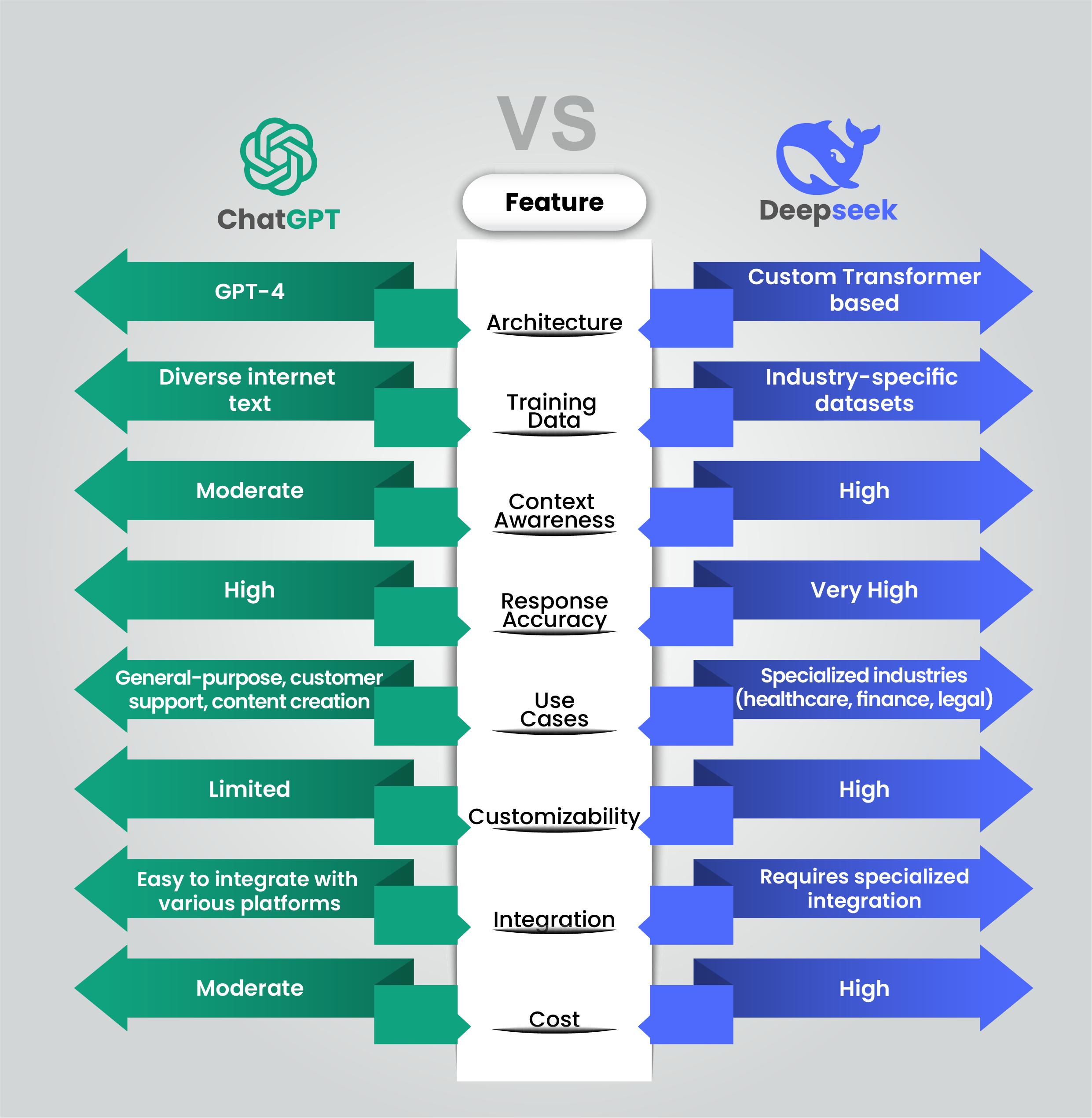
Feature Comparison Of Chat GPT And Deepseek
To better know the differences between ChatGPT and Deepseek, let’s compare their features.
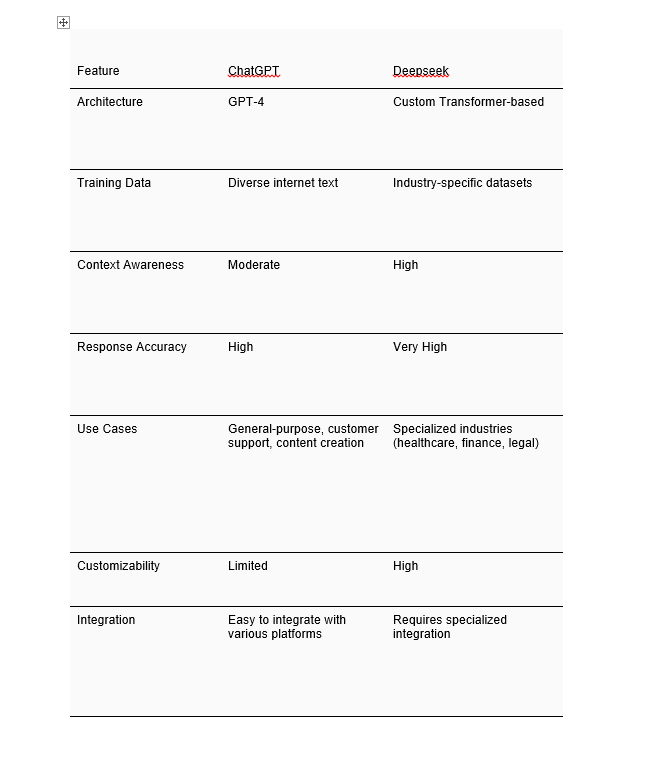
Feature | ChatGPT | Deepseek |
Architecture | GPT-4 | Custom Transformer-based |
Training Data | Diverse internet text | Industry-specific datasets |
Context Awareness | Moderate | High |
Response Accuracy | High | Very High |
Use Cases | General-purpose, customer support, content creation | Specialized industries (healthcare, finance, legal) |
Customizability | Limited | High |
Integration | Easy to integrate with various platforms | Requires specialized integration |
Cost | Moderate | High |
Performance Metrics
Let’s look at some performance metrics to compare ChatGPT and Deepseek.
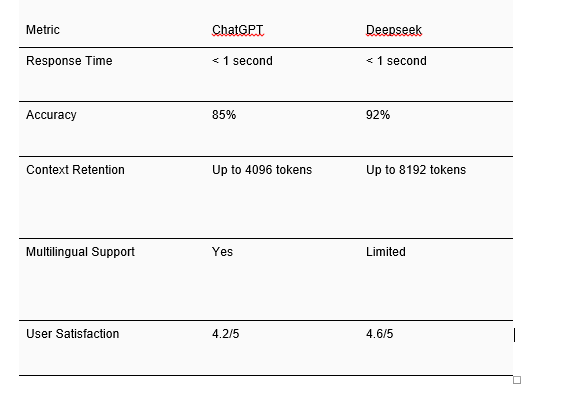
Metric | ChatGPT | Deepseek |
Response Time | < 1 second | < 1 second |
Accuracy | 85% | 92% |
Context Retention | Up to 4096 tokens | Up to 8192 tokens |
Multilingual Support | Yes | Limited |
User Satisfaction | 4.2/5 | 4.6/5 |
Response Time
Both ChatGPT and Deepseek have quick response times, typically under one second. This makes them suitable for real-time applications such as customer support and interactive chatbots.
Accuracy
Deepseek edges out ChatGPT in terms of accuracy, with a 92% accuracy rate compared to ChatGPT’s 85%. This is largely due to Deepseek’s special training on industry-specific datasets, which allows it to provide more relevant responses.
Context Retention
Deepseek also outperforms ChatGPT in context retention, with the ability to retain context up to 8192 tokens, compared to ChatGPT’s 4096 tokens.
This makes Deepseek better when it comes to complex conversations that require an in-depth know how of context.
Multilingual Support
ChatGPT has a clear advantage when it comes to multilingual support, offering capabilities in multiple languages. Deepseek, on the other hand, has limited multilingual support, focusing primarily on English and a few other major languages.
User Satisfaction
User satisfaction ratings are high for both models, but Deepseek’s specialized capabilities give it a slight edge, with a user satisfaction rating of 4.6/5 compared to ChatGPT’s 4.2/5.
Use Cases
ChatGPT
ChatGPT’s general-purpose nature makes it a better choice for a wide range of applications.
- Customer Support: ChatGPT can handle a variety of customer queries, providing quick responses.
- Content Creation: It can generate articles, blog posts, and other written content with minimal human intervention.
Personal Assistants: ChatGPT can be integrated into personal assistant applications to help users with tasks such as scheduling, reminders, and information retrieval.
Deepseek
Deepseek’s special capabilities make it suitable for industries who need precision at all costs.
- Healthcare: Deepseek can assist healthcare professionals by providing context-aware responses to medical queries.
- Finance: It can be used in financial services to provide information on market trends, investment opportunities, and regulatory compliance.
- Legal Services: Deepseek can assist legal professionals by generating legal documents and providing responses to legal queries.
Customizability and Integration
ChatGPT
ChatGPT is relatively easy to integrate with various platforms, making it a popular choice for businesses looking to implement conversational AI quickly.
However, its customizability is limited, which can be a drawback for organizations with specific needs.
Deepseek
Deepseek offers a high degree of customizability, allowing organizations to adjust the model according to their specific preference. However, this comes at the cost of more complex integration processes, which may require expertise.
Cost Considerations
Cost is an important factor when choosing between ChatGPT and Deepseek. ChatGPT is generally more affordable, making it accessible to a wider range of businesses.
Deepseek, with its higher accuracy, comes at a premium cost, which may be justified for some industries.
Conclusion
Both ChatGPT and Deepseek are powerful AI models, each with its own strengths and weaknesses.
ChatGPT’s general-purpose nature makes it a versatile choice for a wide range of applications. On the other hand, Deepseek’s high accuracy makes it ideal for industries where they need precision at all costs.
8 Reasons Why Your Website Needs A Dubai SEO Company

Search engines aren’t going anywhere anytime soon. On the contrary they are still the most popular way we search things. This obviously means that people are searching for products or services like yours on search engines like Google. That’s why we recommend investing in a Dubai SEO company for your website.
SEO has tremendous benefits especially for small businesses. Through search engine optimization you get the opportunity to scale your brand. However, SEO is a complex process so you’ll need to get an SEO company for that.
An SEO Company Makes Your Brand Visible on Google
An SEO Provider Increases Sales
A website which ranks higher on search engines obviously generates more revenue. That’s why when invest in SEO services you get sales and conversions from your potential customers.
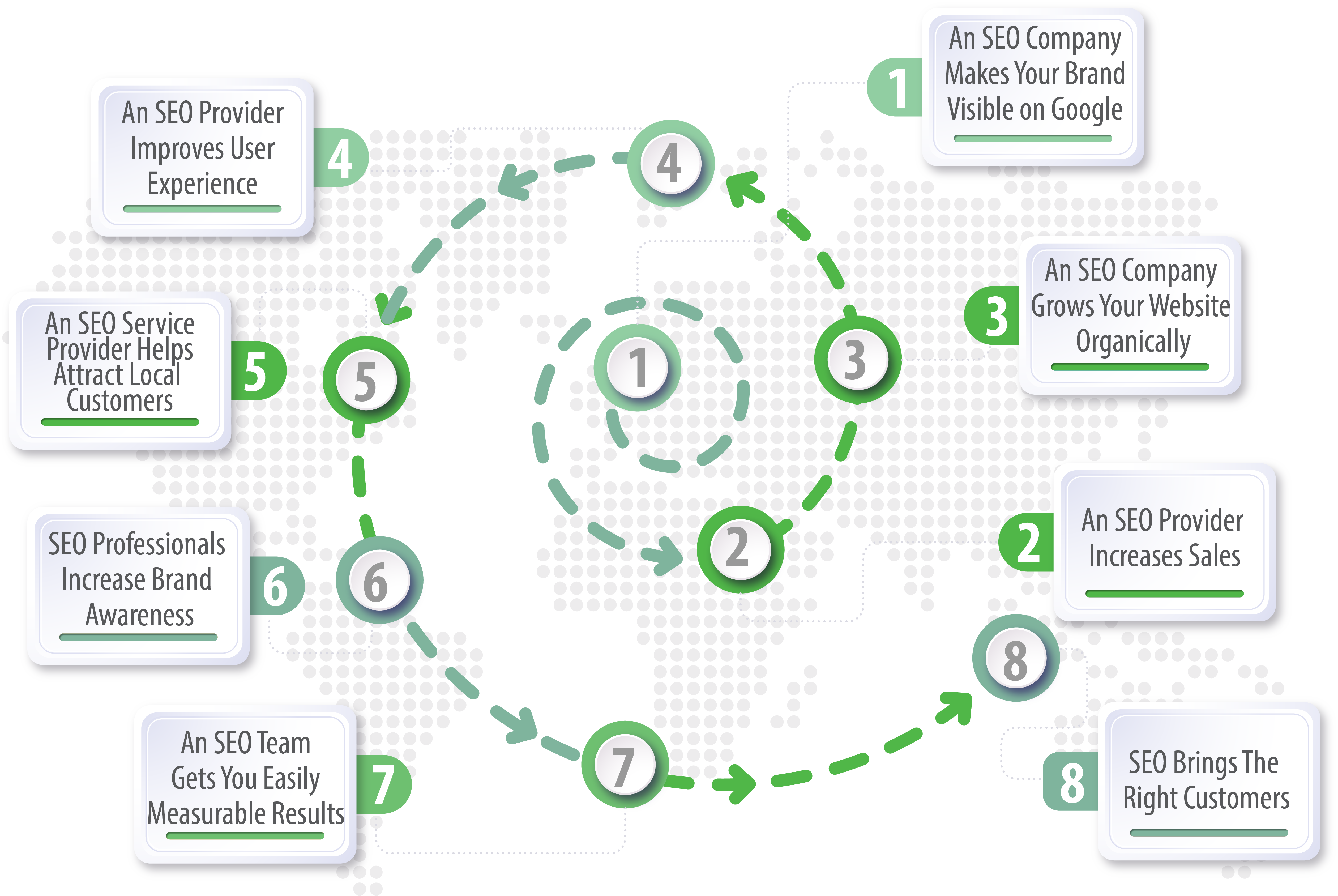
An SEO Company Grows Your Website Organically
An SEO service company knows that organic rankings are better than paid advertising. Yes, paid advertising can get your website faster results but running a PPC campaign is expensive with no long-term results.
An SEO Provider Improves User Experience
A Dubai SEO company understands that providing a flawless user experience is fundamental for growing on search engines. They curate and publish relevant search engine algorithms which pushes your website to the top.
Wayz Digitally is your partner in navigating the ever-evolving digital landscape, transforming visions into captivating experiences that resonate with audiences worldwide.
An SEO Service Provider Helps Attract Local Customers
Local customers make a huge chunk of a website’s total revenue. That’s where an SEO company comes into the picture. The SEO professionals you’ll hire will make your website more visible on the local searches. Those ‘Near Me’ searches are detrimental especially if your a small business.
SEO Professionals Increase Brand Awareness
An outsource SEO team focuses on establishing your brand awareness. They achieve this by getting on the first pages of the search engines. You already know that 9 out of 10 users only browse through the first page of Google.
An SEO Team Gets You Easily Measurable Results
Another benefit of getting search engine optimization in Dubai are the results. An SEO team in Dubai will provide you with detailed reports and analysis which are useful for creating a solid SEO strategy.
SEO Brings The Right Customers
What’s the point if you are a pet food company but your company is showing up on ‘Protein Bar’ searches? That’s why you should have a team of SEO professionals onboard. These professionals make your product or service to the right target audience.
FAQs
A local SEO company understands the regional market trends. This allows them to curate strategies that target your specific audience.
By optimizing your website for search engines, they improve your site’s ranking. This makes it more accessible to potential customers.
Yes, SEO strategies drive quality traffic to your site. They attract visitors who are more likely to convert into customers.
Absolutely, they stay abreast of the latest SEO developments. Through this your website remains competitive in search engine rankings.
Conclusion
Optimizing a site is a complex, and often challenging, process. That’s why your business needs a Dubai SEO company who knows the ins and outs of SEO. Once you work with those SEO professionals you’ll know that the investment was worth every dirham.
8 Signs It’s Time to Hire a Professional Website Design Company In Dubai

Like a physical store a website is the digital storefront of your brand. With a visually appealing website you can get more revenue for your business. This is a complex endeavor which requires a team of professional designers. Hiring someone from Europe or the USA is expensive. That’s why we recommend hiring a professional website design company in Dubai.
Now, comes the other question. What are the signs that tell you it’s time to hire a team of professional designers? In the blog post we are going to talk about just that.
So, without further ado let’s begin.
You’re Jealous of Competitors
When you secretly envy your competitors’ websites, that’s a clear sign that you should up your game. If you know that their websites can have an effect on your brand then your website definitely needs a professional makeover.
Inconsistent Branding
Your website should be consistent across all platforms that includes social media as well. An inconsistency in branding is a clear sign that you need a professional website design company in Dubai like Wayz Digitally. These professionals are all the details! They create a uniform brand identity with the same exact fonts, colors, aesthetics everywhere.

Attracting the Wrong Crowd
If your website isn’t attracting the customers you want then that’s a major problem. The goal of a website should be to attract the right customers who actually convert. A professional designer knows this. They design your website in a such a way that your potential clients land on the website.
Your Design Feels Dated
The demands and trends are always fluctuating. A website who has a 5 year old website design has a slim chance of growing in this wave of change. What was getting results a couple of years ago won’t necessarily get you the results today. You need professional website designers who keep your brand competitive in the industry.
Wayz Digitally is your partner in navigating the ever-evolving digital landscape, transforming visions into captivating experiences that resonate with audiences worldwide.
Low Organic Traffic
The success and failure of a website depends heavily on the site’s traffic. Now, you won’t become visible on search engines just because you have a website. If you want to attract traffic on your site you’ll need to have a website design that is intuitive. Apart from that it should also be perfect for your industry and audience.
You’re Wanting To Raise Your Pricing
High Bounce Rate
If your website has a high bounce rate then that’s a sign that you should change your website design. By getting website design services in Dubai you are partnering up with someone who knows about user experience.
You Want To Impress Your Visitors
If you are a small business owner then you only have a limited chance to impress your potential customers from the get go. An intuitive website design is the first thing they see on your site. This can be the reason either those visitors are converting or not.
FAQs
An outdated website may have a high bounce rate, slow loading times, or fail to represent your company’s current image.
With over half of global internet traffic coming from mobile devices, a mobile-friendly website has a positive impact on user experience and search engine rankings.
If users struggle to find information due to broken links, unclear menus, or overloaded pages, it’s time to consider a redesign.
As your business grows or rebrands, your website should reflect these changes to maintain consistency and professionalism across all platforms.
Conclusion
If you are a small business owner then you only have a limited chance to impress your potential customers from the get go. An intuitive website design is the first thing they see on your site. This can be the reason either those visitors are converting or not.
Hey Siri, Find Me: Navigating the Future of Voice Search and SEO
The digital world is constantly evolving, and one of the latest and most significant trends to emerge is voice search. It’s not just changing the way we interact with technology; it’s also reshaping the landscape of search engine optimization (SEO).
In this blog post, we’re going to explore what voice search is, the future of voice search and seo , and how you can adapt your website to thrive in this voice-centric future.
What is Voice Search?
Voice search is a way of interacting with a device by speaking to it. Instead of typing a query into a search bar, you can simply speak your query into a microphone. Voice search is becoming increasingly popular, thanks to the rise of smartphones and voice-activated devices like Amazon Echo and Google Home.
Remember Voice search isn’t just about convenience; it’s about staying relevant in a world where talking to our devices is becoming second nature.
Why is Voice Search Important for SEO?
Voice search queries are different from traditional text-based queries. They tend to be longer and more conversational. For example, instead of searching for “best restaurants near me,” a user might say “I’m hungry, find me a good restaurant near my location.” This means that businesses need to optimize their websites for voice search if they want to be found by these users.
The Future of Voice Search and SEO
Voice search isn’t just a glimpse into the future; it’s already here. As the popularity of voice-activated devices and mobile usage continues to rise, businesses must adapt their strategies to stay visible and competitive.
- A study by Juniper Research predicts that the global market for voice search will be worth $40 billion by 2023.
- A study by Gartner predicts that 25% of all employee interactions with applications will be via voice by 2023.
- A study by Statista found that 35% of smartphone users in the US have used voice search in the past month.
How does voice search work?
Voice search works by using natural language processing (NLP) to understand the meaning of the user’s query. NLP is a branch of artificial intelligence that allows computers to understand human language. Once the user’s query has been understood, the search engine will then return a list of results that are relevant to the query.
Key differences between voice search and traditional text-based search
- Voice search queries are longer and more conversational. Users are more likely to use natural language when they’re speaking, so their queries tend to be longer and more conversational.
- Voice search queries are more local. When people are using voice search, they’re often looking for information that is relevant to their immediate surroundings. This means that businesses that want to be found in voice search results need to make sure their websites are optimized for local search.
Voice search queries are more likely to be made on mobile devices. Voice search is most commonly used on mobile devices, so businesses need to make sure their websites are mobile-friendly.
Tips To Optimize Websites For Voice Search
Use long-tail keywords
Long-tail keywords are more specific and less competitive than short-tail keywords. They’re also more likely to be used in voice search queries.
Use Natural language
When creating website content, use natural language that reflects how people speak. Avoid technical jargon that may not be used in everyday conversation.
Use Local Keywords
If your business is local, make sure to use local keywords on your website. This will help your website rank higher in voice search results for people who are searching for businesses like yours in your area
Make your Website Mobile-Friendly
Since voice search is most commonly used on mobile devices, it’s important to make sure your website is mobile-friendly. This means that your website should be easy to use and navigate on a small screen.
Use schema markup
Schema markup is code that tells search engines about the content on your website. This can help your website rank higher in voice search results.
Create transcripts for your videos
If you have videos on your website, create transcripts for them. This will help search engines index your videos and make them more accessible to voice search users
Use voice search analytics
There are a number of tools that can help you track how your website is performing in voice search. This information can help you make changes to your website to improve your ranking in voice search results.
Conclusion
The future of voice search and SEO is an exciting frontier in the digital landscape. As more people embrace voice-activated technology, businesses must adapt to this evolving trend. Voice search, with its conversational queries, local focus, and mobile dominance, demands a fresh approach to SEO services.
By optimizing for voice search, you not only improve your search engine rankings but also enhance the user experience for a growing audience. So, don’t miss out on this incredible opportunity – let your customers find you with a simple, “Hey Siri, find me!”
Decoding Data: Mastering Google Analytics for Actionable Business Insights
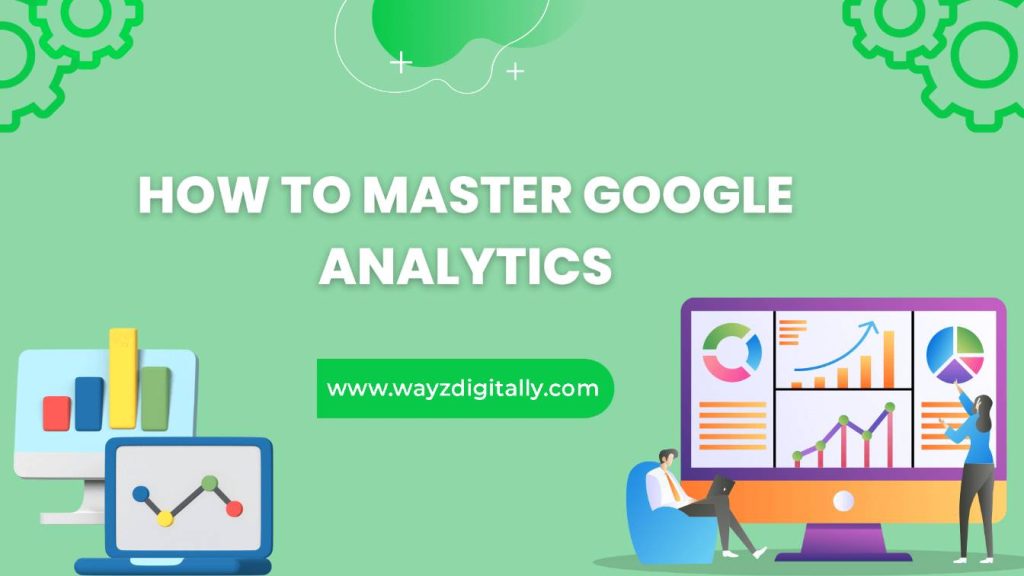
In today’s digital world, data is king. Businesses that can collect, analyze, and act on data have a significant advantage over their competitors. Google Analytics, a robust and user-friendly tool, empowers businesses to not only gather data but to understand it deeply, transforming raw information into actionable strategies.
In a world where every click, visit, and interaction holds valuable information, Google Analytics stands as a potent tool for deciphering the digital landscape.Whether you’re a seasoned data enthusiast or just starting your journey into the world of analytics, this guide will illuminate the path to mastering google analytics for data-driven insights.
What is Google Analytics?
Google Analytics, a free web analytics service offered by Google, is a treasure trove of information about your website’s performance. It tracks and reports website traffic, providing invaluable insights into user behavior, preferences, and interactions. Armed with this data, you can optimize your website, boost traffic, and increase conversions.
Mastering Google Analytics For Data-Driven Insights: 6 Key Steps
Set Up Your Account and Goals
Before you can dive into data analysis, you need to set up your Google Analytics account and define your goals. What do you want to achieve with your website? Are you aiming to drive more traffic, generate leads, or increase sales? Once your goals are crystal clear, you can begin tracking your progress.
Choose the Right Metrics and Dimensions
Google Analytics offers a vast array of metrics and dimensions to track. Metrics measure specific aspects of your website traffic, such as the number of visitors, pages viewed, and bounce rate.
Dimensions, on the other hand, provide insights into the characteristics of your visitors, including their location, device, and browser. To avoid drowning in data, focus on the metrics and dimensions most relevant to your goals.

Create Reports
Google Analytics offers a plethora of pre-built reports to track various aspects of your website traffic. Additionally, you can create custom reports tailored to your specific data needs. These reports are instrumental in visualizing and understanding your website’s performance.
Use Filters and Segments
Filters and segments are your allies in data refinement. They enable you to narrow down your data, allowing for in-depth analysis of specific aspects of your website traffic.
For example, you can create filters to track traffic exclusively from your target audience or segments to focus on visitors from a particular country.
Track Progress Over Time
Monitoring your progress over time is vital for gauging the effectiveness of your strategies. Google Analytics enables you to compare current data with historical data, providing insights into your website’s performance trends.
Use Data for Informed Decisions
Ultimately, the true power of Google Analytics lies in its ability to inform your decision-making process. For instance, if you observe a high bounce rate, you can use this insight to make improvements that enhance the user experience and keep visitors engaged.
Additional Tips To Help You On Your Journey To Mastering Google Analytics
- Get Certified: Google offers various Google Analytics certifications that can validate your skills to potential employers or clients.
- Join a Community: Numerous online communities provide opportunities to learn from other Google Analytics users and share your own experiences.
- Attend a Conference: Consider attending conferences dedicated to Google Analytics. This is an excellent way to learn from experts and network with fellow professionals.
Conclusion
In the ever-evolving digital realm, one thing remains clear: data is the crown jewel and Google Analytics is your gateway to decoding data and extracting actionable business insights. By mastering google analytics for data-driven insights, you’re not just keeping up with the digital world; you’re leading the way. Remember the data you collect isn’t just numbers and statistics; it’s the roadmap to your business’s future success. Embrace it, analyze it, and act upon it, and you’ll find yourself at the forefront of the data-driven revolution.
Influencer Magic: Collaborations That Catapult Your Brand to New Heights

In the vast and bustling world of digital marketing, where attention is a prized currency, influencer collaboration for brand growth have emerged as the secret ingredient for success. Imagine having a trusted figure advocate for your brand to a massive audience, building awareness and fueling sales.
What is Influencer Marketing?
Influencer marketing, at its core, involves partnering with individuals who wield substantial influence over a specific audience. These influencers are not just social media stars; they’re individuals who’ve built trust and authenticity within their niche. When they endorse your brand, they are essentially lending their credibility to your products or services.
Why is Influencer Marketing So Effective?
The efficacy of influencer collaboration for brand growth is underpinned by several key factors. Firstly, consumers tend to trust the recommendations of influencers more than traditional advertisements. This trust arises from the personal connection and authenticity that influencers bring to their content.
Secondly, influencers possess the capacity to reach vast audiences, magnifying the impact of your brand message. Lastly, from a business standpoint, influencer marketing can provide an impressive return on investment, often making it a cost-effective strategy.
How to Create Successful Influencer Collaboration for Brand Growth
If you want to create successful influencer collaborations, there are a few things you need to do:
Choosing the Right Influencers
Not all influencers are created equal, and selecting the right ones is paramount. It begins with aligning the influencer’s audience with your target demographic. But it doesn’t end there. Authenticity and trustworthiness are non-negotiable.
Scrutinize an influencer’s previous collaborations, engagement rates, and the quality of their content. Seek out those whose values align with your brand’s ethos, ensuring a harmonious partnership that resonates with both your audience and theirs.
Setting Clear Goals
To embark on a journey, you need a destination. Similarly, influencer collaborations should have well-defined objectives. Do you aspire to amplify brand awareness, steer more traffic to your website, or generate a torrent of leads?
Each goal necessitates a unique approach. By having a clear roadmap from the outset, you can tailor your collaboration strategy to achieve specific outcomes, ensuring that every action aligns with your overarching objectives
Creating a Mutually Beneficial Relationship
Effective influencer collaborations for brand growth are built on reciprocity. Recognize that influencers invest time and effort in promoting your brand, and they should be compensated fairly. Monetary compensation, free products, or exclusive access are all valuable incentives.
However, remember that collaboration goes beyond transactions. Cultivate a genuine partnership by actively involving influencers in your brand’s narrative. Engage them in the creative process, value their insights, and foster a relationship that benefits both parties, making it a win-win alliance.
Tracking Your Results
Tracking the results of your influencer collaborations is the compass that keeps your campaign on course. Metrics provide invaluable insights into what’s working and what’s not. Monitor crucial indicators like website traffic, social media engagement, conversion rates, and sales figures.
Analyze the data meticulously, drawing actionable insights to refine your strategy. The beauty of digital marketing is the ability to adapt in real-time. If a particular approach isn’t yielding the desired results, you can pivot swiftly, optimizing your campaign for greater effectiveness.
The Latest Trends In Influencer Marketing
The influencer marketing industry is constantly evolving, and there are a number of new trends that you should be aware of. Here are a few of the latest trends:
Micro-influencers: Micro-influencers are people with smaller followings, but they often have a more engaged audience. This makes them a good option for businesses with smaller budgets.
Influencer marketing platforms: There are a number of platforms that make it easier to find and collaborate with influencers. These platforms can help you filter influencers by niche, location, and other criteria.
Influencer marketing software: There are also a number of software programs that can help you manage your influencer marketing campaigns. These programs can help you track your results, automate your tasks, and more.
Tips To Help You Get The Most Out Of Your Influencer Collaborations
- Be transparent: Be upfront with influencers about your expectations and what you’re looking to achieve with the collaboration.
- Give influencers creative freedom: Let influencers put their own spin on the collaboration. This will help them create content that their audience will enjoy and engage with.
Be patient: It takes time to build relationships with influencers and create successful collaborations. Don’t expect overnight results.
Conclusion :
Influencer collaborations for brand growth are not mere marketing tactics; they are transformative partnerships that facilitate authentic connections with your audience, elevate brand recognition, and fuel business growth. Remember, the magic of influencer collaborations is real, and it awaits your brand’s unique narrative.
Email Marketing Best Practices for Customer Engagement
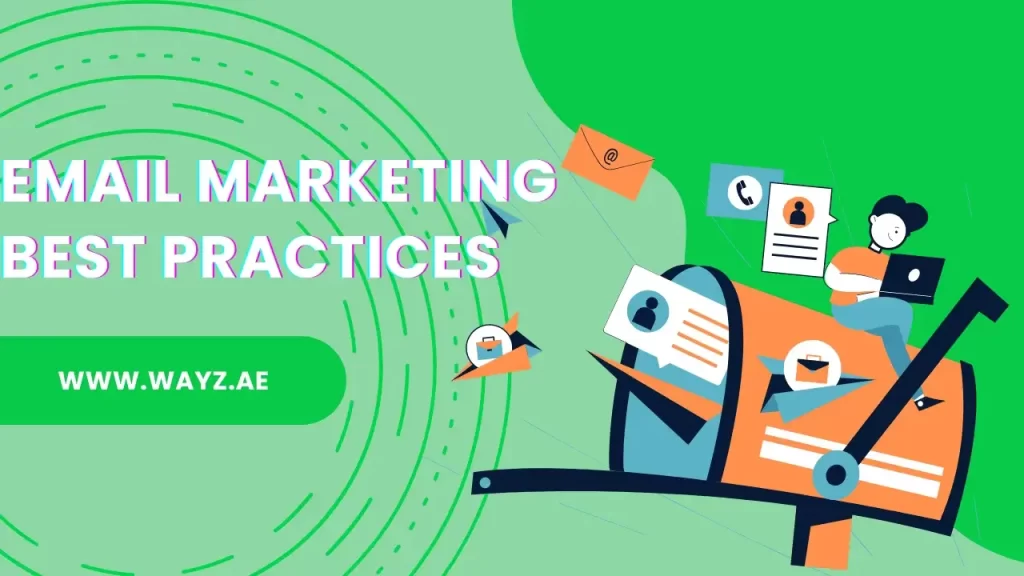
Email marketing is a powerful tool that can be used to reach your target audience, build relationships, and drive sales. However, rafting compelling email campaigns goes beyond hitting the send button; it demands strategic finesse.
Our comprehensive guide delves into the intricacies of achieving inbox impact. From subject line to content that captivates, we’ll navigate you through the realm of Inbox Impact: Email Marketing Best Practices for Stellar Customer Engagement that ensure your emails not only reach your audience but also resonate profoundly.
Choose the Right Email Marketing Platform
A successful journey to Inbox Impact: Email Marketing Best Practices for Stellar Customer Engagement begins with choosing the right vessel. The email marketing platform you select should align with your needs and budget. When choosing an email marketing platform, you should consider factors such as:
- The number of subscribers you have
- The features you need
- The ease of use
- The price
Platforms like Mailchimp, Constant Contact, and SendinBlue offer diverse options to suit various requirements.
Segment Your Email List
Once equipped with the right platform, segmentation becomes your secret weapon. Divide your subscribers into groups based on interests, demographics, or past behaviors. This segmentation empowers you to craft tailored emails, resonating deeply with recipients. The result? Higher open and click-through rates, as your content directly addresses their preferences
Write Compelling Email Copy
In the email marketing landscape, the written word is your canvas. Craft concise, compelling copy that captures attention from the subject line to the closing. Employ persuasive language and provide clear calls to action. Whether it’s encouraging a click, a purchase, or a subscription, guide your recipients with intention.
Design Captivating Email Templates
Visual appeal is paramount in an inbox teeming with messages. Design emails that captivate with eye-catching visuals and user-friendly layouts. High-quality images and fonts enhance the professional look of your emails. Simplicity is key – avoid clutter and keep your design streamlined to facilitate easy reading.
Time Your Emails Strategically
Timing can make or break your email’s impact. You want your emails to land when your audience is most receptive. While the optimal timing varies by industry and audience, sending emails during the week, ideally mid-morning or early afternoon, often yields positive results. Gauge your audience’s habits and preferences for a tailored approach.
Track and Analyze Results
The journey doesn’t end with sending; it evolves through tracking and analyzing. Leveraging tools like Google Analytics and email marketing platforms, monitor metrics like open rates, click-through rates, and unsubscribe rates. These insights illuminate what’s resonating, enabling you to fine-tune your campaigns for superior results.
Additional Tips To Improve Your Email Marketing ROI
- Personalize your emails: Personalizing your emails with the recipient’s name and other relevant information will make them feel more valued and appreciated, which will increase your chances of them opening and reading your emails.
- Use a clear and concise subject line: Your subject line is the first thing your subscribers will see, so it’s important to make it clear and concise so that they’ll be more likely to open your email.
- Use a double opt-in process when collecting email addresses: This means that subscribers have to confirm their email address before they’re added to your list. This will help to reduce spam complaints and improve your deliverability rates.
- A/B test your emails: This means sending different versions of the same email to different segments of your list to see which one performs better. This can help you optimize your emails for open rates, click-through rates, and conversions.
- Keep your emails short and sweet: People are busy and don’t have time to read long emails. Keep your emails to the point and make sure they’re easy to scan.
Use a call to action in every email: Tell your subscribers what you want them to do, whether it’s clicking on a link, making a purchase, or signing up for your newsletter.
Conclusion :
In a world saturated with digital communication, email marketing stands out as a potent means to connect and boost sales.By adhering to Inbox Impact: Email Marketing Best Practices for Stellar Customer Engagement, you’re not just sending emails – you’re igniting conversations, fostering loyalty, and amplifying conversions.
Remember, personalized content that resonates, respectful timing, and a clear call to action can make all the difference. Also, don’t shy away from testing and optimizing to uncover what truly clicks with your subscribers.










